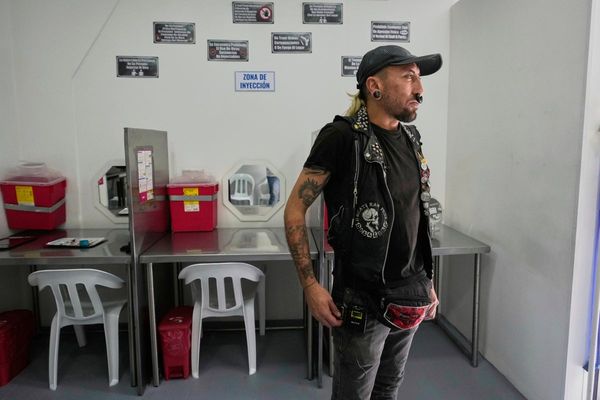As is the case with most positions in today’s NFL, the modern safety position demands more positional variance and versatility than ever before. The simple designations of strong and free safety have been eradicated, and no team in 2019 plays one kind of coverage—you won’t find any defensive coordinator posting up single-high or two-high safety coverage and leaving it at that. Any defensive coordinator who did would find himself on the wrong side of the proverbial 8-ball very quickly.
RELATED: The NFL’s 11 best slot defenders
Safeties in name like Tyrann Mathieu, Malcolm Jenkins, Justin Simmons, and Patrick Chung play a ton of slot and sub-package linebacker duty as a matter of course. There’s more of a need than ever for a true center-field safety, and they’re still out there (there are several on this list), and there are still traditional box safeties in a situational sense, but a young safety coming into the NFL in the later part of this decade will need to know how to play multiple positions to get a real shot on most defenses.
RELATED: The NFL’s 11 best outside cornerbacks
Here are the 11 players who best handle those expanded responsibilities coming into the 2019 season.
11. Adrian Amos, Green Bay Packers

The Packers have lost a ton of secondary talent via free agency over the last few seasons, so it was good to see the franchise fight back and get a top-level safety from a division rival. This they did when they signed Amos, the former Bears star, to a four-year, $37 million deal in March. Given the recent issues in Green Bay’s deep secondary—especially after Ha Ha Clinton Dix’s midseason departure—defensive coordinator Mike Pettine will certainly appreciate the addition of a guy who allowed 32 catches on 45 targets for just 271 yards and 78 yards after the catch, as well as three touchdowns, three interceptions, five pass breakups, and an opponent passer rating of 80.9.
Amos also showed the ability to blitz off the edge and contest against the run, but it’s as a single-high and two-deep safety that he’ll likely make his bones in Titletown. An assignment-correct player with impressive field range and closing ability, Amos has the potential to become one of the league’s best deep safeties. He’ll certainly have the opportunity in his new home.
10. John Johnson III, Los Angeles Rams

Johnson was a boom-and-bust player in 2018—at times, capable of shutting down a passing offense single-handedly, and at other times, a bit too lenient when it came to allowing enemy touchdowns (per Pro Football Focus, he was involved in six last season). Overall, Johnson was targeted 51 times last season, allowing 37 catches, 328 yards, 138 yards after the catch, five interceptions, seven pass breakups, and an opponent passer rating of 89.0.
As a run defender and middle of the field coverage guy, Johnson is an aggressive and opportunistic asset. He proved the former with his 100 tackles and 37 stops, and as a safety/linebacker hybrid in Wade Phillips’ defense, he has the leaping ability to take away contested catches, as well as the quickness and closing ability to take passes away from a deep third alignment. If he cleans up his coverage a bit in the seasons to come, Johnson has the talent to be a top-three safety overall.
9. Micah Hyde, Buffalo Bills

Another “Swiss Army Knife” defender, Hyde played 201 snaps in the box last season, 120 snaps at slot defender, and 523 snaps at free safety. Wherever Hyde lined up, he didn’t give much away—he was targeted 30 times, allowing 20 receptions for 179 yards, 58 yards after the catch, two interceptions, and three pass breakups.
When Hyde plays the deep third, he has the ability to turn and run on deep posts and seam routes, When he’s in the box, he can flare out to curl/flat responsibilities, and he can create stops in the run game. Safeties like Hyde who excel at two or three positions give their defensive coordinators new and rare flexibility in deploying their other defenders. It’s an invaluable set of skills.
8. Jessie Bates III, Cincinnati Bengals

One of 2018’s surprise rookie defenders, Bates came out of Wake Forest in the second round, and immediately became a factor in Cincinnati’s defense. On 33 targets, he allowed just 19 catches for 218 yards, 113 yards after the catch, two touchdowns, three interceptions, four pass breakups, and an opponent passer rating of 59.9—fifth-best in the NFL among safeties who played at least 50% of their defense’s snaps.
Tested in both single-high and split-safety coverages in his rookie campaign, Bates had no trouble matching his range and natural athleticism with an uncanny sense of route concepts and receiver placement. This gave him the ability to anticipate where the ball was about to go, and the confidence to jump the route for the interception or deflection. The star is on the rise with Bates.
7. Harrison Smith, Minnesota Vikings

Smith was voted NFC Defensive Player of the Week in Week 1 of the 2018 season, but he seemed to be a bit under the radar over the rest of the season. The stats and tape tell a story of a player who had the kind of high-quality season we’ve come to expect—on 36 targets, Smith allowed 24 receptions for 336 yards, 90 yards after the catch, one touchdown, three interceptions, two pass breakups, and an opponent passer rating of 71.1. Perhaps it was because Smith couldn’t have the kind of season he had in 2016, where he allowed a ridiculous 29.9 opponent passer rating (enemy quarterbacks would have been better off throwing the ball away than into his area), but Smith still played very well.
If there’s a more aware safety in the league than Smith, that player would have to be on a very short list. Whether he’s up in the box ready to stop a run play, or in the deep third calling the shots for the pass defense, Smith aligns his athleticism with a seemingly psychic understanding of what’s about to happen in the passing game. That’s made him an incredibly valuable asset in Minnesota’s defense throughout his career.
6. Earl Thomas III, Baltimore Ravens

Through his first six NFL seasons, Thomas didn’t miss a single game, and he became the standard-bearer for the safety position, wresting that spot from Ed Reed and Troy Polamalu. The only reason Thomas isn’t higher on this list right now is his recent injury history—he’s missed 19 games in the last three seasons, and though he has just about every bit of his skill set when he is on the field, the absences start to add up—especially as Thomas turned 30 in May.
Still, the Ravens signed the ex-Seahawk to a four-year, $55 million contract in the offseason, hoping they’re getting the guy who redefined the center-field safety through his first two contracts. It’s a relatively safe bet based on performance, as Thomas still has the intensity, field awareness, and demonic speed to shut down just about any intermediate to deep route, and the closing acceleration to negate shorter passes and runs as he blasts downfield.
5. Malik Hooker, Indianapolis Colts

In just his second NFL season, Hooker became the recipient of the ultimate gesture of respect given a defensive back—an extreme lack of targets in relation to his snap totals. He was on the field for 977 snaps, and saw just nine targets all season. He gave up four catches for 51 yards, 25 yards after the catch, one touchdown, two interceptions, two pass breakups, and an opponent passer rating of 60.2.
Part of this has to do with Hooker’s role in the Colts’ defense—he’s the last line in the deep third either as a single-high or split safety, so he’s seeing a lot of completions underneath his position. Then, it’s his job to go get the receiver, which he does with outstanding diagnostic skill and speed. But when you do throw deep in Hooker’s area, your chances of success are not good. He’ll either take over the route up the boundary or jump your receiver’s route over the middle. Championship defenses need deep-third safeties who can shut things down play after play, and the Colts are in very good shape with Hooker in that role.
4. Jamal Adams, New York Jets

The Jets are trying to recover from a down period in which their roster may have been the NFL’s least talented. Adding Adams with the sixth overall pick in the 2017 draft was a step in the right direction, as the LSU alum has become a fulcrum in a defense in need of on-field pace-setting. In 2018, he allowed 24 catches on 48 targets for 291 yards, 122 yards after the catch, one touchdown, one interception, six pass breakups, and an opponent passer rating of 67.3. He also had 94 tackles, 44 stops, and three forced fumbles.
Adams’ recovery and closing speed jump off the tape, and they’re key attributes when it comes to what he does. Yes, he can blaze through a run fit to create a negative play or blitz off the edge, but what puts him on this list is his additional ability to play intermediate to deep coverage, moving through swaths of field in a big hurry to negate what might be big plays without his presence.
3. Derwin James, Los Angeles Chargers

Perhaps no young safety typifies the value of positional versatility than James, the Chargers’ first-round pick in 2018 who wasted no time becoming the epicenter of Gus Bradley’s defense. James allowed 44 catches on 62 targets for 364 yards, two touchdowns, and three interceptions in his rookie campaign (with six pass breakups and an opponent passer rating of 76.3), but that’s far from the whole story.
James was also a highly valuable blitzer off the edge, racking up four sacks, three quarterback hits, and 14 quarterback hurries. In addition, he was a great run-stopper, with 91 tackles and 47 total stops–most in the league among safeties. Whether he was playing deep, or peeling off pressure looks to engage in slant/flat coverage, or getting after the quarterback, James was a revelation in his first NFL season, and the best is yet to come.
2. Eddie Jackson, Chicago Bears

Jackson had a decent rookie season in 2017, but things really came together for him in 2018, when he became among the NFL’s best cover safeties. Last season, he allowed just 24 receptions on 44 targets for 256 yards, 158 yards after the catch, three touchdowns, six interceptions, eight pass breakups, and an opponent passer rating of 54.9—the best rating among safeties with at least 25 targets. He also had 45 tackles and 18 stops.
Jackson has an uncanny nose for the ball in intermediate and deep coverage, which allows him to time throws and routes and jump those routes with alarming regularity. He closes to the receiver well in and out of his area, and if you want to know how efficiently opportunistic he is, consider that his five defensive touchdowns over the last two seasons (three from interceptions, two from fumbles) is three more than any other player during that time.
1. Kevin Byard, Tennessee Titans

This particular millennium hasn’t been a great one for safeties wanting to rack up huge interception numbers. Since the 1970 merger, 11 safeties have grabbed at least 10 interceptions in a season, and none of them did it after 1986, when Ronnie Lott had 10. A handful of players at the position have nine picks since 2000 (Darren Sharper three times and Ed Reed twice, among them), so Byard’s eight-interception season for the Titans in 2017 was pretty remarkable. He followed up with four more picks in 2018, proving that, as a deep safety, he’s no fluke when it comes to patrolling the deep third of a defense and taking the ball away. In 2018, Byard allowed 21 catches on 30 targets for 172 yards, 83 yards after the catch, one touchdown, two pass breakups, and an opponent passer rating of 55.8. No one-trick pony, he also registered a sack, seven total quarterback pressures, 62 tackles, and 17 stops.
Byard brings every possible attribute you want in a deep safety to the field. Not only does he have the lateral quickness and range to cover to either boundary seamlessly, but he also has an impressive ability to read quarterback intentions and receiver routes. This gives him an additional athletic advantage as he closes to the ball—at times, it looks as if he’s running the route for the receiver. Byard’s status as the NFL’s best safety is well-earned.







